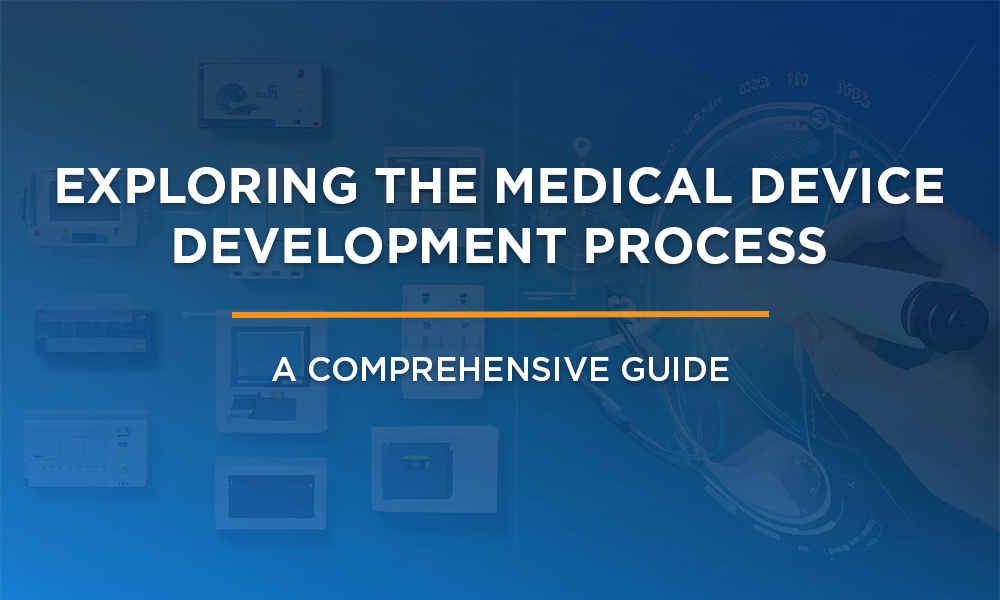Portable Product Design Tips for Successful Launch
What is Portable Product Design?
Portable Product Design refers to the process of designing products, including medical products with portability as a central feature. This involves the development of goods that are easy to transport and use in various locations, often featuring compactness, lightweight, ease of setup and pack-down, durability, and often energy efficiency. The goal of portable product design is to create goods that deliver their full functionality regardless of the setting, allowing users to benefit from them both at home and on the go.
We’ll be discussing key considerations for launching a successful portable products from a product design standpoint.
5 Considerations for Launching a Successful Portable Product
Extending the life of battery-operated products is one of the most important considerations for portable product design.
For example, extending the battery life of implantable medical devices lengthens the time between surgical procedures. For consumer and industrial products, having the best battery life is a crucial competitive advantage. Customers expect a smooth and uninterrupted experience with a portable device. If the battery life is too short, then the experience is interrupted each time a battery has to be replaced or recharged. These interruptions frustrate the end-user, resulting in customer resentment, negative comments, and loss of revenue. Battery life is so important that leading battery manufacturers have exchanged lawsuits over misleading battery life claims even before products are envisioned.
1) Marketing specifications are not engineering specifications
The battery life of commercial devices is frequently published in marketing literature and cut sheets to ensure that the product lands at the top of the buyers’ shortlist. It is common practice to publish inflated battery life estimates based on unrealistically benign conditions with significant product functionality disabled.
Giving a design team the inflated battery life as an engineering requirement will set the stage to over-design the product. The basis for the number is not known, and the team will be left to make assumptions using the unrealistic number. Development costs will increase, and the time to launch the product may be extended. All the while, the competition’s next bold claim is coming down the tracks.
To determine realistic specifications and constraints, consider evaluating the battery life of a device manufactured by the thorniest competitor. If no predicate / competitive device exists, consider assessing the battery life requirements with carefully designed user studies.
2) Make sure all functional groups are involved in generating requirements, determining project scope, and evaluating intermediate project outputs
User needs and marketing requirements are the foundation of the design specifications. Adding functionality that is not appreciated by the end user creates unnecessary work. Having engineers from all functional groups contribute early and attend design review meetings reduces project and technical risk.
Many different functional groups have to cooperate in the selection of lithium-ion battery packs. Lithium-ion cells have high energy densities and must be treated with special consideration. Medical Device Designers have to consider mechanical and electrical abuse for safety considerations as a matter of basic safety. Concerning medical product development, the Quality/Design Assurance function must see that the UFMEA’s and DFMEA’s (User and Design Failure Modes and Effect Analyses) are correctly executed. When integrating bare cells into a device, the designers should assist with the definition of inspection criteria and tests for the cells.
Leakage current flows through the combination of moisture and ionic contamination. This current can fully drain a battery long before the medical product is purchased. Medical manufacturing and design engineering have to work together to define process controls and indicators for printed circuit board contamination.
Supply chains may have to vet certain manufacturers of batteries favored by engineering as part of a business process. Approvals should be given as early as possible. Extra time for design, reliability and verification testing will increase project scope if components must be dual-sourced for a medical product.
Reliability engineering may require long-term tests. Testing must start as soon as possible. Such testing can frequently dovetail with supplemental engineering studies of battery capacity and wear in other components. Coordination is essential as time goes on, making changes becomes expensive.
3) Both analysis and measurement are required
Both analysis and measurement of energy withdrawn from the battery are necessary to keep the project on the right path. Measurements give trusted information for a particular set of components, but the analysis is required to extend the measurements to account for component tolerances and operational scenarios.
Decomposing system operation into well-defined activities ensures a thorough analysis of battery life and provides insight into the impact of specific product functions on battery life. Product operation is decomposed into a set of activities that draw energy from the battery. Consider a simple device that measures, logs, and transmits the value of the measured variable. It will also activate an alarm if a fixed limit is exceeded. One possible decomposition consists of the following activities when it comes to designing portable products:
- Wake up from sleep and stabilize the circuitry
- Execute checksums
- Measure a variable using an analog-to-digital converter
- Compensate for measurement errors such as offset, gain, and linearity
- Scale the conversion to appropriate physical units
- Test the plausibility of the result
- Check the result against the safety limits
- Log the result
- If necessary, activate or deactivate an electromechanical load such as an alarm relay, pump, or stepper motor
- Send, and acknowledge receipt of, a data packet over an RF link
- Return to sleep mode
As the design evolves, the incremental hardware and software changes are reviewed for impact on battery life. Mapping specific hardware and software features to energy consumption is a valuable tool for Systems Engineering. First, it highlights areas where there is an opportunity to improve the feature. Second, new solutions can be quickly evaluated. For instance, does switching from floating-point to fixed-point calculations save energy? Thirdly, if it is not clear whether allocating a function to hardware or software can benefit battery life, a quick measurement will make the choice obvious.
With some help from a debugger or a trigger on a spare i/o pin, test equipment can measure the energy associated with each activity quickly and easily. Most equipment can provide statistical information for each transaction after many observations.
As we stated above, a bit more analysis will be necessary to tie everything together and include the effects of component variation. As the transactions are completed, the cell voltage will decrease according to the initial state of charge and state of health. If you are aiming high, you will want to include the effects of any power conversion efficiency changes as the battery cell voltage drops.
We have described a simple system and many portable systems are more complex. In this case, it is much more suitable to decompose system operations into states.
4) Deal with Operational Factors upfront
Operational factors include use cases and stochastic variables that have a significant effect on battery life. In the list of activities above, it is not clear how often the device must activate the electromechanical load or how often the device must retransmit data due to poor link quality. These factors clearly affect battery life. All project stakeholders should agree that all assumptions leading to the operational factors are understood and acceptable.
In some cases, it will be difficult for everyone to be comfortable with the assumptions. Additional information must have to be obtained from field studies using a prototype unit. It is far better to address uncertainty early in development rather than choosing which functionality or requirements have to be reduced near the end of development.
5) It’s not all about the battery
There is a tremendous amount of information available describing considerations relevant to primary and secondary cell capacity. The information exists because the capacity stated on the datasheet has very limited value. Cell capacity is sensitive to authenticity, manufacturing variation, storage time and conditions, charging and discharging profiles, and conditions during use. An AA cell sold in the Far East will not have the same capacity as a cell sold in other regions.
One condition that is often overlooked is the effect of cell impedance on circuit behavior. As a battery or stack of cells becomes depleted, cell impedance rises. Transient step currents, drawn by load circuitry, cause voltage dips that may impact other parts of the circuitry. If a voltage dip triggers a microprocessor’s brownout detector, then the product will experience spurious resets. A drop in temperature creates a similar problem. Moreover, cell impedance tends to increase with age. This means that battery capacity must be calculated using an end-of-life voltage higher than the voltage required to operate the product in steady-state conditions.
Electromechanical loads such as pumps have electrical characteristics that change significantly with temperature and age. For example, in cold temperatures, lubricants become more viscous and diaphragms become stiffer. The viscosity of media will increase. Over time filters clog and bearing friction increases. Tubes become occluded at any time. Electrical contacts wear, creating the need for more energy sent to the coil to break or make a circuit. All of these conditions draw extra energy from the battery.
Most of these conditions cannot be economically treated by analysis, so they have to be measured with techniques from reliability engineering. These techniques can take a significant amount of time.
Importance of Portable Product Design
Failing to account for these considerations drives up development costs and creates problems that will surely be discovered long after the product ships. Expense and time to get to the root cause, higher than expected warranty costs, and loss of customer goodwill are just some of the many consequences. Contact Sunrise Labs to connect with leading experts on medical product design today.
FAQ’s
1. What are the biggest mistakes companies make when designing the battery life of portable products?
There are two main mistakes:
- Relying on marketing estimates: Marketing materials often inflate battery life based on unrealistic conditions. This sets unrealistic expectations for the engineering team and leads to over-designing the product.
- Not involving all departments early on: Design, engineering, manufacturing, and quality assurance all need to be involved from the beginning to ensure a realistic battery life and a smooth development process.
2. Why is it important to involve so many departments when designing battery life?
Each department plays a crucial role:
- User Experience (UX) and Marketing: Define user needs and avoid adding unnecessary features that drain the battery.
- Engineering: Selects appropriate batteries and designs the product for efficient power consumption.
- Manufacturing: Implements processes to avoid contamination that can shorten battery life.
- Quality Assurance: Ensures the product meets safety standards and performs reliably throughout its life.
3. How can companies get a more accurate idea of how long a product’s battery will last?
A combination of analysis and measurement is needed:
- Analysis: Break down product functions into activities that consume power. Estimate the energy used for each activity considering component variations.
- Measurement: Use test equipment to measure the actual energy consumption of each activity. This data is then used to refine the analysis for a more accurate overall battery life estimate.
4. What are some operational factors that can affect battery life that aren’t considered in the product itself?
- Usage patterns: How often features are used (e.g., data transmission, alarms) significantly impacts battery life.
- Environmental conditions: Temperature extremes can affect battery capacity and cell impedance.
5. Besides the battery itself, what other aspects of the product design can influence battery life?
The efficiency of other components also plays a role:
- Electromechanical loads (pumps, motors): Their energy consumption can change with age, temperature, and wear.
- Circuitry: Voltage dips caused by a draining battery can trigger resets or malfunctions in other parts of the device.







